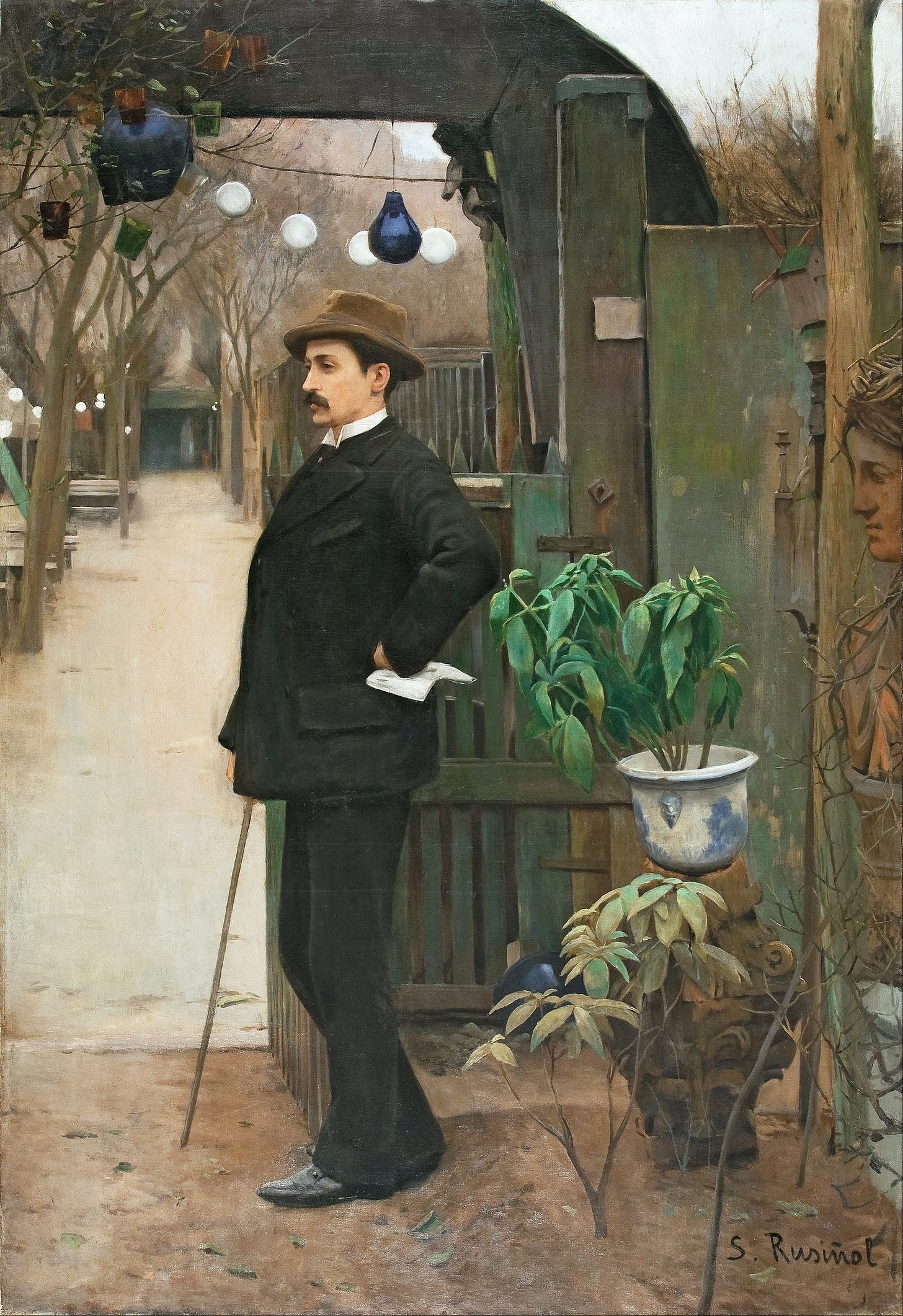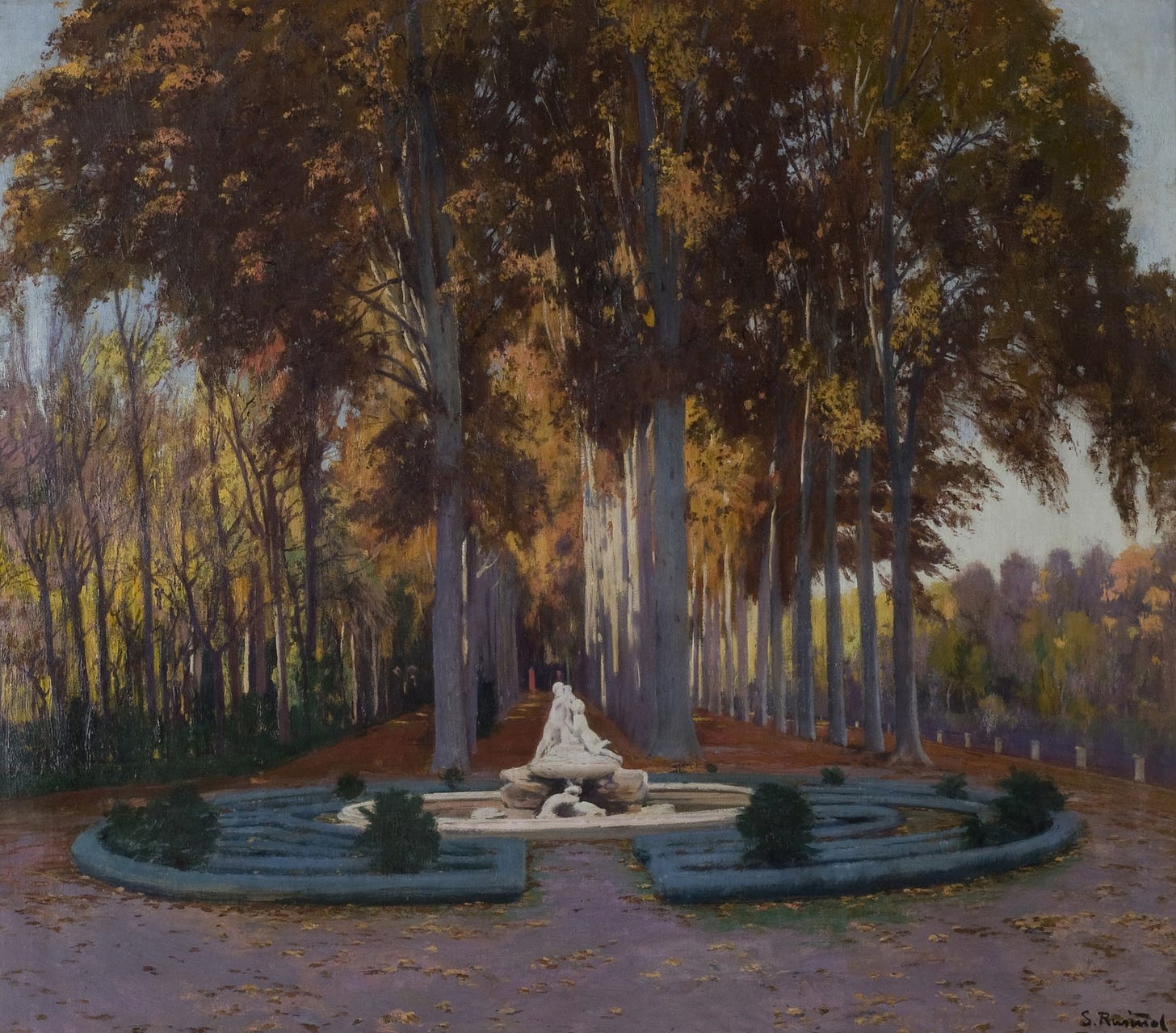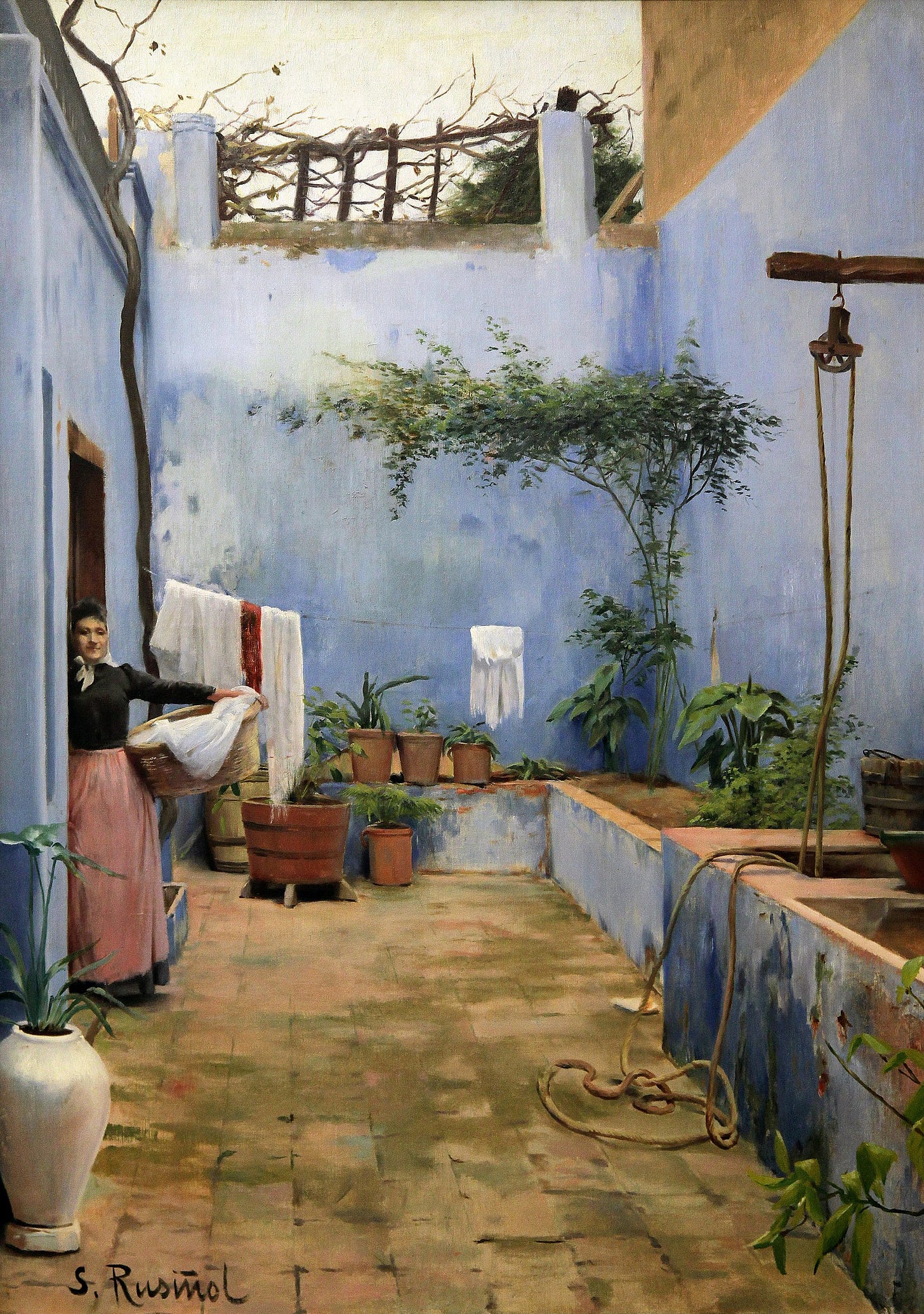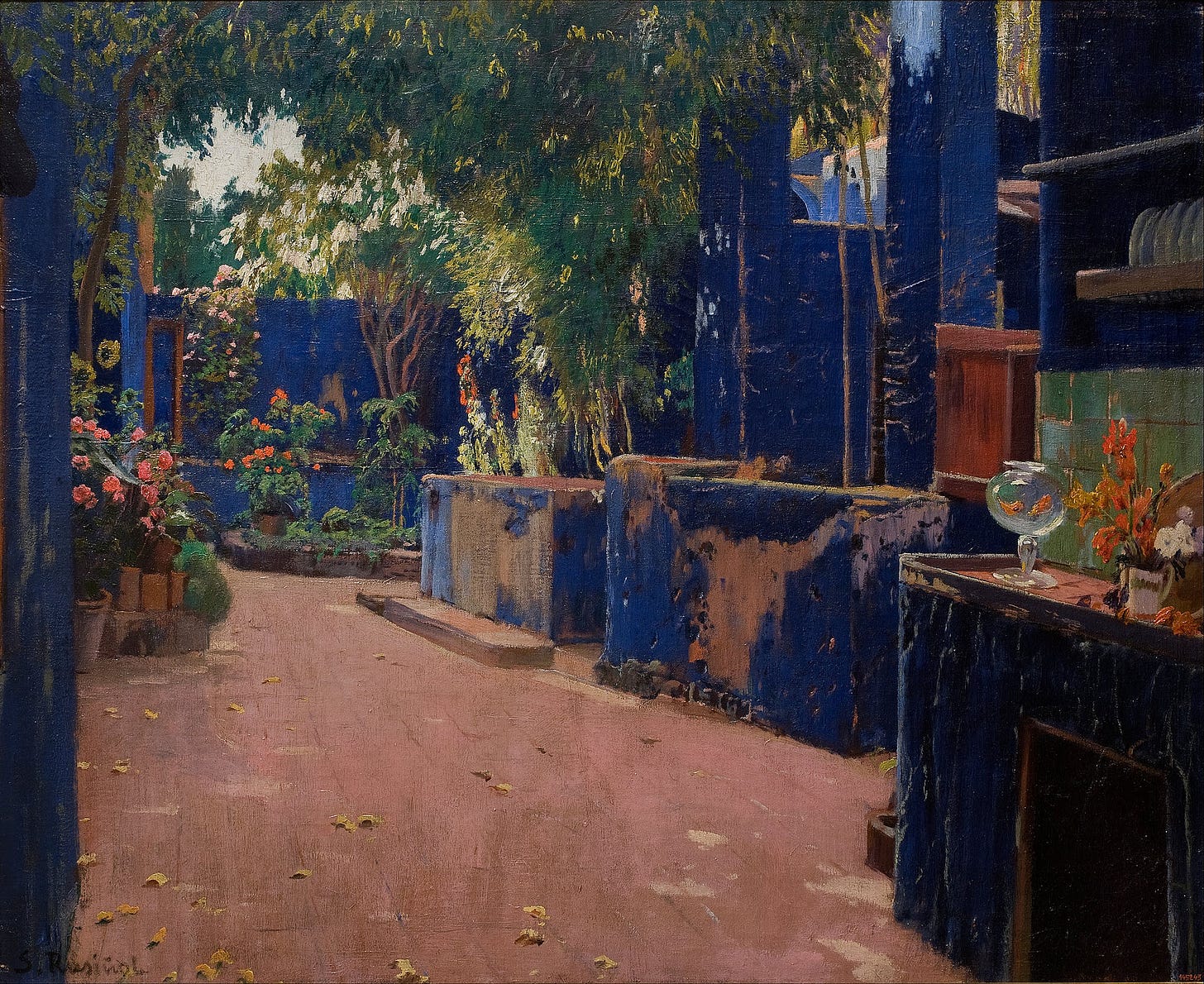In 1876, the French philosopher, parapsychologist and professor Émile Boirac first used the term, “déjà vu,” to describe what he termed a “metagnomy” (“knowledge of things situated beyond those we can normally know”).
The Spanish painter, poet, playwright, journalist and avid collector of art, Santiago Rusiñol, was only 15 years old at that time. A few years later, he would become one of the pioneers of the Catalan modernisme movement and a significant influence on the creators of art nouveau, surrealism and cubism, including a very young protégé named Pablo Picasso.
140 years later, in May of 2016, I stepped into the Cau Ferrat, Santiago Rusiñol’s former art studio (now a museum) in Sitges, Spain, and experienced an unparalleled kind of déjà vu, something which has never happened before or since.
The week before the arrival of our guests for a tour of Northern Spain, we had rented a small studio apartment in the heart of Sitges, just a stone’s throw from the beach, to acclimate ourselves and have a brief sojourn in the gloriously gay “Saint-Tropez of Spain.” And so we savored our spectacular week of soirées in Sitges, where the amount of gay men in high season soars to about 90% of the general population. What an experience to walk the streets and be in the majority for once in your life! We imbibed a preposterous amount of Cava sangrias, gleefully gorged ourselves on patatas bravas (almost daily) and saw a dazzling array of spectacular drag shows, including a performance by Sharonne, the latest winner of RuPaul’s Drag Race España. I even did a duet of Tina Turner’s “Proud Mary” with her on stage! But I digress.
After a week of delightful revelry, the first day of our Northern Spain tour started in Sitges with a professionally guided visit of the Cau Ferrat Museum. I was simply not prepared for what was about to happen when I stepped through the door of the Cau Ferrat.

I nearly fainted. The familiarity, the sense of place, the recognition of every artifact sent me whirling into a time warp. I was literally transported. I simply knew that I had been here before. It was as if I was reliving a life I’d had with Santiago Rusiñol. I knew him. And please understand that I am very familiar with the fact that obsessive fans of a particular artist are occasionally propelled to the idea that they have a personal relationship to someone they’ve never met, but I can assure you that this wasn’t that. In fact, I knew very little of Santiago Rusiñol, but I could suddenly see myself dressed in fin-de-siècle Catalan evening attire with a coupe of Cava in one hand and an ornate walking stick in the other, waltzing about his vast ballroom with his coterie of bohemians.

Thankfully, we had a guided tour, because I could barely speak to our guests. It was as if I was in a trance, mesmerized. A few times, I recall pointing at artifacts and murmuring my own recollections of them to myself. I was transfixed, utterly immersed in another time, in another world. The world of Santiago Rusiñol.
And what a world it was. Not only was he a prolific artist in his own right (he painted more than a thousand works), he was also a collector of rare and beautiful paintings, drawings and sculptures by others, which he treasured all of his life (paintings by El Greco, Miquel Utrillo, Ramon Casas, Suzanne Valadon and five of Picasso’s first works). As is immediately apparent from the horror vacui that strikes you the moment you enter the Cau Ferrat, he was also a collector of rare objets d’art - furniture, ceramics, glassware, ironwork and door-knockers. On the ground floor there are more than 200 works of ceramic plates, bowls, washbasins, pitchers, pharmaceutical jars, fruit-stands and tureens, all ranging from the 14th to the 19th centuries.

The great hall, which was the ballroom, houses an impressive display of ironworks, including rows of beautifully ornate door-knockers, several of which date back to the 15th century. This was also arresting to me, as I have used antique door-knockers on many, many art pieces that I’ve created over the years. In the center of the great hall and the fountain room, there is also an enormous collection of glassware (over 400 pieces) that Rusiñol collected during his lifetime, some of them rare archaeological finds.

Indeed, there is no part of the Cau Ferrat where one’s eye can rest without falling on some incredible piece of historical artistry. And that’s how Santiago Rusiñol wanted it. In 1891, he moved to Sitges to create what he called “Total Art,” a movement of art as religion (an idea particularly scandalous during that time in Spain). From Sitges, he organized the first “Festa Modernista,” bringing together avant-garde artists from all over Catalan and Spain. He subsequently built the Cau Ferrat as his house and studio, filling it with all of his possessions. Over the next 37 years, he hosted elaborate gatherings of some of Spain’s most prominent bohemian artists, musicians and thinkers until his death in 1931. Upon his death, he left the building of Cau Ferrat and its entire contents to the city of Sitges, with the stipulation that it become a permanent museum and that nothing could be removed or sold.
By the time we finished our tour of the museum, my senses were completely overloaded and the feeling of déjà vu, which is often fleeting, had not subsided in the least. As we exited through the majestic portal of the Cau Ferrat, we were greeted with gusts of warm sea air from the Sant Sebastià beach, and I inhaled the fresh spring scents of wild rosemary and honeysuckle, still reeling from my mystical encounter with the world of Santiago Rusiñol.
[Here are some of my favorite paintings by Santiago Rusiñol, many of which I had the pleasure to see in person at a phenomenal exposition in Barcelona in 2017: Santiago Rusiñol, Gardens of Spain.]



To learn more about Rusiñol’s artistic circle, including his close companion, Ramon Casas, the co-founder of Els Quatre Gats and the modernisme movement in Catalan, check out our Aesthetic Arrest Podcast: Art Nouveau, Linguine alle Vongole, Béla Bartók & Betty White.












This is absolutely fascinating and it makes so much sense to me. I can see that lifetime reflected in your current lifestyle choices and interests.
I do past life work with clients and such a strong déjà vu is rare and confirms the fact that you were there.